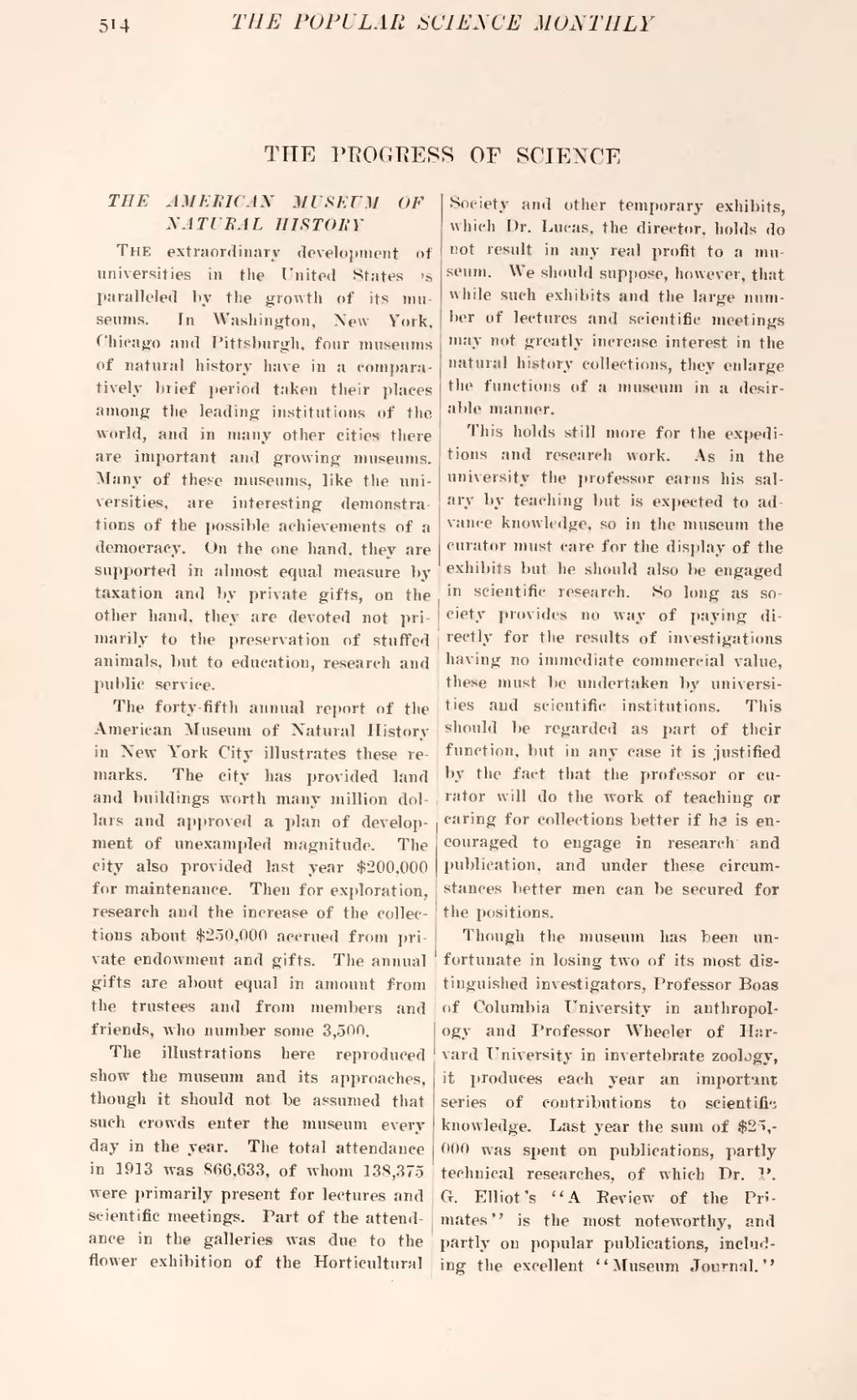THE AMERICAN MUSEUM OF NATURAL HISTORY
The extraordinary development of universities in the United States is paralleled by the growth of its museums. In Washington, New York, Chicago and Pittsburgh, four museums of natural history have in a comparatively brief period taken their places among the leading institutions of the world, and in many other cities there are important and growing museums. Many of these museums, like the universities, are interesting demonstrations of the possible achievements of a democracy. On the one hand, they are supported in almost equal measure by taxation and by private gifts, on the other hand, they are devoted not primarily to the preservation of stuffed animals, but to education, research and public service.
The forty-fifth annual report of the American Museum of Natural History in New York City illustrates these remarks. The city has provided land and buildings worth many million dollars and approved a plan of development of unexampled magnitude. The city also provided last year $200,000 for maintenance. Then for exploration, research and the increase of the collections about $250,000 accrued from private endowment and gifts. The annual gifts are about equal in amount from the trustees and from members and friends, who number some 3,500.
The illustrations here reproduced show the museum and its approaches, though it should not be assumed that such crowds enter the museum every day in the year. The total attendance in 1913 was 866,633, of whom 138,375 were primarily present for lectures and scientific meetings. Part of the attendance in the galleries was due to the flower exhibition of the Horticultural Society and other temporary exhibits, which Dr. Lucas, the director, holds do not result in any real profit to a museum. We should suppose, however, that while such exhibits and the large number of lectures and scientific meetings may not greatly increase interest in the natural history collections, they enlarge the functions of a museum in a desirable manner.
This holds still more for the expeditions and research work. As in the university the professor earns his salary by teaching but is expected to advance knowledge, so in the museum the curator must care for the display of the exhibits but he should also be engaged in scientific research. So long as society provides no way of paying directly for the results of investigations having no immediate commercial value, these must be undertaken by universities and scientific institutions. This should be regarded as part of their function, but in any case it is justified by the fact that the professor or curator will do the work of teaching or caring for collections better if ha is encouraged to engage in research and publication, and under these circumstances better men can be secured for the positions.
Though the museum has been unfortunate in losing two of its most distinguished investigators, Professor Boas of Columbia University in anthropology and Professor Wheeler of Harvard University in invertebrate zoology, it produces each year an important series of contributions to scientific knowledge. Last year the sum of $25,000 was spent on publications, partly technical researches, of which Dr. P. G. Elliot's "A Review of the Primates" is the most noteworthy, and partly on popular publications, including the excellent "Museum Journal."
